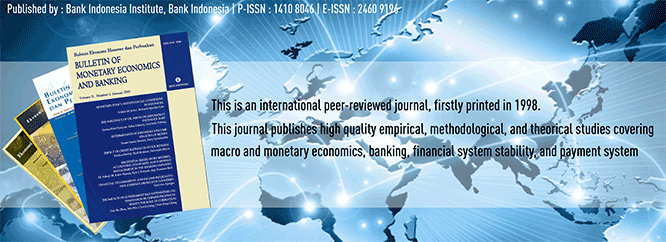
Document Type
Article
Abstract
The aim of this study is to measure the efficiency of Islamic Bank in Indonesia, to analyze the factors that affect the level of efficiency which is known as Two-Stage Data Envelopment Analysis method and to propose measurement of Bank Soundness with modified CAMELS. The objects of this study are 10 (ten) Islamic Bank (BUS) in Indonesia which analyzes from the second Quarter of 2010 until the fourth Quarter of 2012. There are 2 (two) methods which are used in this study, namely non-parametric method of Data Envelopment Analysis (DEA) on the first stage and Tobit model on the second stage. In addition, this study will illustrate the formulation of the financial factors of CAELS instead of CAMEL by integrating the results of efficiency level measurement using DEA in CAELS formulation. Overall, the results, show that the efficiency level of Islamic banks in Indonesia during the time period in this study, have not yet reach the optimum level of efficiency. In addition, modification of CAELS for the bank performance level method by integrating the result of DEA shows that the modification of CAELS could be more accurate in describing the bank performance level, particularly for Islamic Bank in Indonesia. Keywords: Efficiency, Data Envelopment Analysis (DEA), Tobit Model, CAELS + DEAJEL Classification: C02, C14, C54,G21
Recommended Citation
Firdaus, Muhammad Faza and Hosen, Muhamad Nadratuzzaman
(2013)
"Efficiency of Islamic Banks Using Two Stage Approach of Data Envelopment Analysis,"
Bulletin of Monetary Economics and Banking: Vol. 16:
No.
2, Article 2.
DOI: https://doi.org/10.21098/bemp.v16i2.442
Available at:
https://bulletin.bmeb-bi.org/bmeb/vol16/iss2/2
First Page
155
Last Page
176
Creative Commons License

This work is licensed under a Creative Commons Attribution-NonCommercial 4.0 International License
Country
Indonesia
Affiliation
State Islamic University of Syarif Hidayatullah Jakarta







